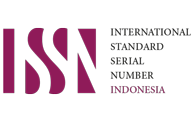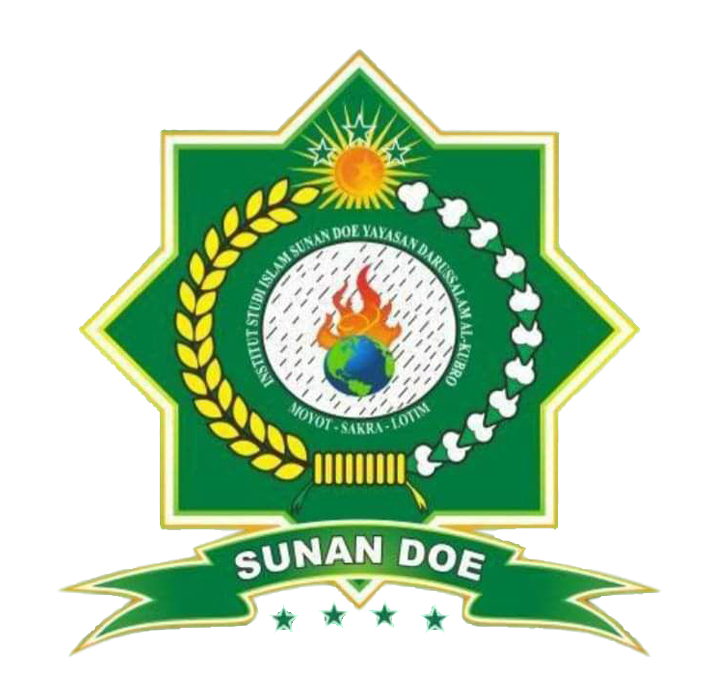An Analysis of Students’ Anxiety in Speaking English at First Grade of SMK Nasional
Keywords:
student's anxiety, speaking englishAbstract
The objective of this study was to identify the factors contributing to students' nervousness when speaking English and to assess their English speaking proficiency at SMK Nasional 2 Kayu Tanam. This research employs qualitative methodologies with a descriptive orientation. Two instruments were utilized in this research, specifically the LFCAS questionnaire developed by Horwitz in 1986 and the speaking test created by Brown in 2004. The research sample comprised 35 students, divided across two classes: class X accounting and class X TSM 2. The sample was obtained using purposive sampling. The research data was gathered through the administration of a questionnaire and a speaking test in two classes: class X accounting and class X TSM 2 SMK Nasional 2 Kayu Tanam. The results of the LFCAS questionnaire indicated that communication apprehension was at 33.5%, fear of negative evaluation at 24.56%, and test anxiety at 41.94%. The outcomes of the class X accounting and X TSM 2 in the five aspects are as follows: vocabulary 19.93%, grammar 19.26%, fluency 19.77%, pronunciation 20.6%, and understanding 20.44%. Based on the LFCAS questionnaire, pupils can be classified as either low or below average, whereas the results of the students' speaking test are classified as excellent.
References
Amir, R. A., Korompot, C. A., & Baa, S. (2023). A Study on the Effectiveness of Using Digital Material of Podcast to Improve Student's Speaking Ability. Journal of Excellence in English Language Education, 2(2), 189–198.
Bantjes, J., Hunt, X., & Stein, D. J. (2023). Anxious, depressed, and suicidal: Crisis narratives in university student mental health and the need for a balanced approach to student wellness. International Journal of Environmental Research and Public Health, 20(6), 4859.
Bourban, M. (2023). Eco-Anxiety and the Responses of Ecological Citizenship and Mindfulness. In The Palgrave Handbook of Environmental Politics and Theory (pp. 65–88). Springer.
Dai, D. W. (2023). What do second language speakers really need for real-world interaction? A needs analysis of L2 Chinese interactional competence. Language Teaching Research, 13621688221144836.
Douglas, B. D., Ewell, P. J., & Brauer, M. (2023). Data quality in online human-subjects research: Comparisons between MTurk, Prolific, Cloud Research, Qualtrics, and SONA. Plos One, 18(3), e0279720.
Estep, J. A., Sun, L. O., & Riccomagno, M. M. (2023). A luciferase fragment complementation assay to detect focal adhesion kinase (FAK) signaling events. Heliyon, 9(4).
Fanni, S. C., Febi, M., Aghakhanyan, G., & Neri, E. (2023). Natural language processing. In Introduction to Artificial Intelligence (pp. 87–99). Springer.
Himmatova, N. N. (2023). Psychological Aspects of Learning a Foreign Language. Spanish Journal of Innovation and Integrity, 13, 1–6.
Indahsari, H. K., Suyanta, S., Yusri, H., Khaerunnisa, N., & Astuti, S. R. D. (2023). Analysis of the Use of Android-Based Edusan Learning Media on Students’ ICT Literacy Skills. Jurnal Penelitian Pendidikan IPA, 9(5), 2312–2318.
Khairani, A. (2023). An Analysis of Speaking Performance Between Higher and Non-Higher Achievers: A Case Study at Department of English Education of UIN Suska Riau. Universitas Islam Negeri Sultan Syarif Kasim Riau.
Liu, X.-Q., Guo, Y.-X., & Xu, Y. (2023). Risk factors and digital interventions for anxiety disorders in college students: Stakeholder perspectives. World Journal of Clinical Cases, 11(7), 1442.
Manfredini, D., Ahlberg, J., Aarab, G., Bender, S., Bracci, A., Cistulli, P. A., Conti, P. C., De Leeuw, R., Durham, J., & Emodi‐Perlman, A. (2024). Standardised tool for the assessment of bruxism. Journal of Oral Rehabilitation, 51(1), 29–58.
Manfredo, M. J., Vaske, J. J., Bruyere, B. L., Field, D. R., & Brown, P. J. (2023). Society and natural resources: A summary of knowledge.
Martawijaya, M. A., Rahmadhanningsih, S., Swandi, A., Hasyim, M., & Sujiono, E. H. (2023). The Effect of Applying the Ethno-STEM-Project-based Learning Model on Students’ Higher-order Thinking Skill and Misconception of Physics Topics Related to Lake Tempe, Indonesia. Jurnal Pendidikan IPA Indonesia, 12(1), 1–13.
Miranda, J. A., & Wahyudin, A. Y. (2023). Pre-Service Teachers’ Strategies in Improving Students’ Speaking Skills. Journal of English Language Teaching and Learning, 4(1), 40–47.
Nair, V. K., Farah, W., & Cushing, I. (2023). A critical analysis of standardized testing in speech and language therapy. Language, Speech, and Hearing Services in Schools, 54(3), 781–793.
Navarro-Pérez, J.-J., Samper, P., Sancho, P., Georgieva, S., Carbonell, Á., & Mestre, M.-V. (2023). Development and content validation of a comprehensive tool for assessing risk and protective factors in children and adolescents: The ACRAM. Children and Youth Services Review, 145, 106761.
Nugraha, I. M. I. P., Rahman, A., & Sotlikova, R. (2024). Investigating EFL Police Officers’ Learning Needs and Problems in English Listening and Speaking Skills: An English Specific Purposes (ESP) Context. Journal of Language and Literature Studies, 4(1), 84–97.
Nurwulan, L. L., & Maulida, H. (2023). How Do Remote Audit and Client Company Size Affect Audit Fees? JRAK, 15(1), 108–113.
Rivaldo, Y., & Nabella, S. D. (2023). Employee performance: Education, training, experience and work discipline. Calitatea, 24(193), 182–188.
Tunca, S., Sezen, B., & Wilk, V. (2023). An exploratory content and sentiment analysis of the guardian metaverse articles using leximancer and natural language processing. Journal of Big Data, 10(1), 82.
Wang, X., Li, Y., Khasraghi, H. J., & Trumbach, C. (2023). The mediating role of security anxiety in internet threat avoidance behavior. Computers & Security, 134, 103429.
Yaqin, A. H., & Yasir, D. (2024). The English learning effort: Optimizing English speaking skills through total physical response method for fourth grade elementary school at Kuala Lumpur of Indonesian school (SIKL). International Journal of Contemporary Sciences (IJCS), 1(5), 153–172.
Downloads
Published
Issue
Section
License
Copyright (c) 2024 Julian Chandra, M Saleh Yahya Himni (Author)

This work is licensed under a Creative Commons Attribution-ShareAlike 4.0 International License.
Asshika: Journal of English Language Teaching and Learning y Saniya Institute is licensed under Creative Commons Attribution ShareAlike 4.0
It means that:
- Adapted Material means material subject to Copyright and Similar Rights that is derived from or based upon the Licensed Material and in which the Licensed Material is translated, altered, arranged, transformed, or otherwise modified in a manner requiring permission under the Copyright and Similar Rights held by the Licensor. For purposes of this Public License, where the Licensed Material is a musical work, performance, or sound recording, Adapted Material is always produced where the Licensed Material is synched in timed relation with a moving image.
- Adapter's License means the license You apply to Your Copyright and Similar Rights in Your contributions to Adapted Material in accordance with the terms and conditions of this Public License.
- BY-SA Compatible License means a license listed at creativecommons.org/compatiblelicenses , approved by Creative Commons as essentially the equivalent of this Public License.
- Copyright and Similar Rights means copyright and/or similar rights closely related to copyright including, without limitation, performance, broadcast, sound recording, and Sui Generis Database Rights, without regard to how the rights are labeled or categorized. For purposes of this Public License, the rights specified in Section 2(b)(1)-(2) are not Copyright and Similar Rights.
- Effective Technological Measures means those measures that, in the absence of proper authority, may not be circumvented under laws fulfilling obligations under Article 11 of the WIPO Copyright Treaty adopted on December 20, 1996, and/or similar international agreements.
- Exceptions and Limitations means fair use, fair dealing, and/or any other exception or limitation to Copyright and Similar Rights that applies to Your use of the Licensed Material.
- License Elements means the license attributes listed in the name of a Creative Commons Public License. The License Elements of this Public License are Attribution and ShareAlike.
- Licensed Material means the artistic or literary work, database, or other material to which the Licensor applied this Public License.
- Licensed Rights means the rights granted to You subject to the terms and conditions of this Public License, which are limited to all Copyright and Similar Rights that apply to Your use of the Licensed Material and that the Licensor has authority to license.
- Licensor means the individual(s) or entity(ies) granting rights under this Public License.
- Sui Generis Database Rights means rights other than copyright resulting from Directive 96/9/EC of the European Parliament and of the Council of 11 March 1996 on the legal protection of databases, as amended and/or succeeded, as well as other essentially equivalent rights anywhere in the world.
- You means the individual or entity exercising the Licensed Rights under this Public License. Your has a corresponding meaning.
















